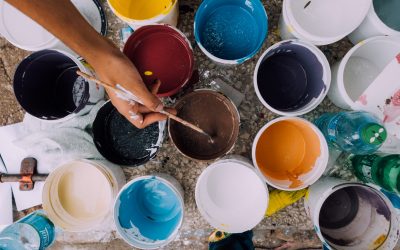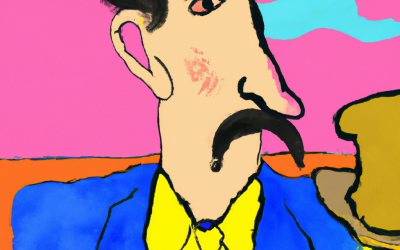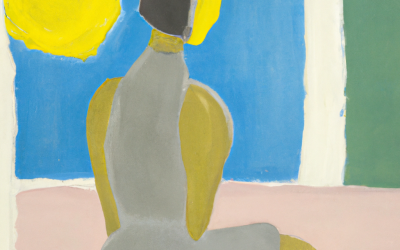Great art tells a story. So should you. Let’s get you talking about your work like a creative wizard instead of a sleep-deprived squirrel mumbling in front of a gallery wall.
Once Upon a Canvas: Why Storytelling for Artists Matters
Sure, your painting speaks for itself—but sometimes it mumbles.
In a world oversaturated with visual content (cat memes, #aesthetic reels, and twelve million abstract nudes), storytelling is what makes your art stick. Whether you’re a painter, sculptor, digital collage dream-weaver, or interpretive-dance taxidermist (hey, no judgment), the way you talk about your art matters.
People don’t just want “a thing.”
They want a connection. A glimpse into your world. The messy, vulnerable, triumphant, soul-searchy parts of making art.
Good storytelling is the bridge between your private creative cave and the big ol’ world outside. And here’s the good news: you don’t need a degree in literary theory. You just need a voice that feels real—and maybe a few prompts to get you going.
But I’m an Artist, Not a Novelist
We know. But storytelling isn’t just for novelists and screenwriters. It’s for anyone trying to communicate meaning, stir emotions, or explain why there’s a clay walrus on a velvet pedestal named “Mother’s Disappointment.”
Matthew Fox, author of Creativity: Where the Divine and the Human Meet, says creativity is a form of spiritual expression—a way of revealing deeper truths. That means your story isn’t fluff. It’s part of the art.
Your job isn’t to impress.
Your job is to express.
Step 1 of Storytelling for Artists: Find the Spark (a.k.a. The Origin Story)
Every piece has a beginning—even if it’s just “I was really tired and had leftover ink and accidentally made something cool.”
Ask yourself:
-
What feeling kicked this off?
-
Was there a question, dream, or obsession behind it?
-
Did you start with an image, a phrase, a real-life event?
Write it down like you’re explaining it to a curious (but slightly distracted) friend. Keep it casual. Then tighten it up if you want to share it on a gallery wall, your website, or in a dramatic voiceover on TikTok.
Step 2: Describe the Process (Even the Weird Bits)
People love process. Even the messy, awkward, “I cried into this charcoal” parts.
Think:
-
What materials did you use, and why?
-
Did anything surprise you while making it?
-
Was there a moment when you wanted to quit?
Sharing your process makes people feel like insiders. And insiders become collectors, fans, and patrons. Or at least very enthusiastic email subscribers.
Step 3: Connect the Dots (aka Why It Matters)
This is the moment you move from “here’s what I made” to “here’s why it matters.”
Maybe your abstract sculpture was about the tension between structure and surrender (also known as Monday mornings). Maybe your collage is a love letter to your grandmother, chaos, and the ’90s.
Make connections between the personal and the universal. Let people feel something.
If you can name the ache, the longing, the joy behind your work—you’ll be speaking the same language as your audience: human.
Step 4: Practice Saying It Out Loud Without Cringing
Rehearse your story like you’re telling it to a good friend over coffee—not like you’re defending a dissertation while being chased by art critics with clipboards.
Try it in different formats:
-
Say it out loud to your cat.
-
Record a short video.
-
Write it as a caption, blog post, or poem.
-
Make it into a zine or handwritten note for your buyers.
The more you share, the more natural it’ll feel. And the more you it’ll sound.
Quick Storytelling for Artists Tips, for Artists Who Just Want to Paint and Be Left Alone
-
✨ Keep it short-ish – You’re not writing a novel. Unless you are. In that case, carry on.
-
🪄 Use specific images and moments – “This piece was born from a dream I had about a floating fox and a bowl of soup” is more memorable than “It’s about transformation.”
-
😂 Don’t be afraid of humor – Funny + heartfelt = unforgettable.
-
🐚 Don’t overexplain – Leave space for mystery. Let the viewer meet you halfway.
-
🧃 Avoid “artspeak” – No one needs to know your work “interrogates the semiotic tensions of disembodied spatial memory.” Unless they do. In which case: please also explain what that means.
Where You Can Use Your Story:
-
Gallery statements (make curators love you)
-
Artist talks (make audiences weep or chuckle)
-
Your website bio (make collectors connect)
-
Social media posts (make the algorithm slightly more tolerable)
-
Grant applications (make the grant gods smile)
Final Thought: Your Story Is Part of the Art
You don’t need to turn into a motivational speaker or write a memoir overnight. But if you can tell people what moves you to create—and why it matters—you’re doing more than explaining your art.
You’re inviting them into your world.
And that, dear artist, is where the real magic happens.
TL;DR Recap:
-
Storytelling gives your art emotional resonance and human connection.
-
You don’t have to be poetic or profound—just real.
-
Share the spark, the process, and the meaning behind your work.
-
Use your story to enrich your art’s value (and maybe even help it sell).
-
Always avoid “semiotic disembodiment.” No one knows what it means.





















